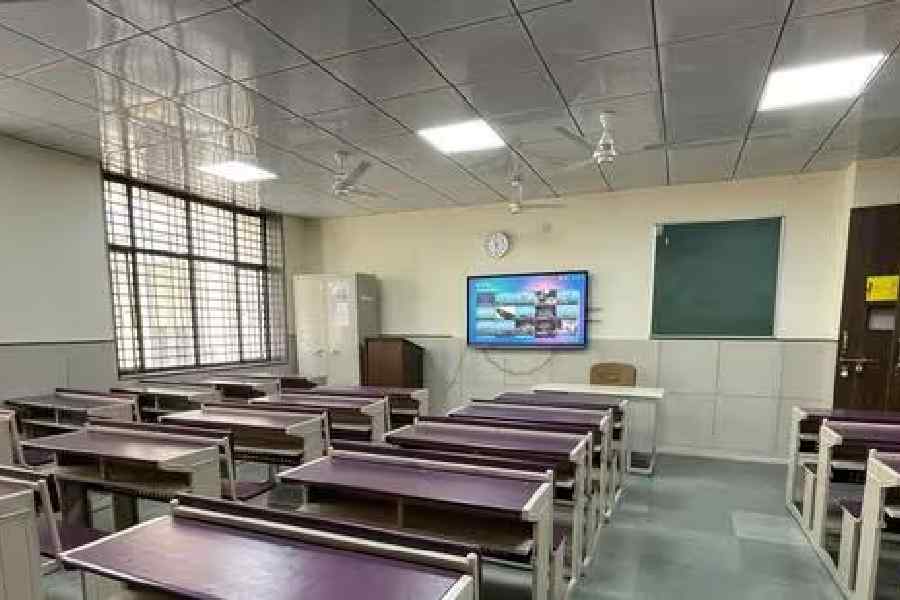A three-week long nationwide lockdown was announced on March 24 to curb the spread of the coronavirus pandemic. An unintended consequence of the lockdown unfolded soon with thousands of migrant labourers thronging several bus and rail stations in the hope of reaching home. The republic still does not know how many of them walked how many kilometres or the adversities that they encountered. What the country was left with were some images that are going to haunt it for a long time.
We have no means of estimating the numbers of these migrants barring some ambiguous figures released on migration. Despite the claims of inclusive vikas, the coronavirus pandemic has exposed the colossal failure of the numerous social security programmes that are meant to help people at the bottom of the pyramid. Census 2011 pegged the figure of internal migration in India at 455 million, a net addition of 141 million migrants between 2001 and 2011. Out of the total number of migrants, 54.26 million people are inter-state migrants. Of these, more than 12.5 million people migrated for work/employment.
The share of the eastern region in the total number of inter-state migrants is around 24.8 per cent (13.5 million). For employment-related reasons, the share is more than 29.9 per cent (3.74 million). At the national level as well as in the eastern region, Bihar is one of the leading suppliers of inter-state migrants (7.45 million), out of whom 2.26 million migrated for work/employment. The second position is occupied by West Bengal, which was traditionally a net recipient till 2001. But in the 2011 census, Bengal suddenly emerged as the net sender with a volume of inter-state migrants of 2.40 million. This state also pushed around 6 lakh people to migrate to other states for work or employment-related reasons. It is followed by Jharkhand (1.70 million), Odisha (1.27 million) and Assam (6.59 lakh). There are references in the speeches of ministers, including those by the prime minister, about the eastern part of the country being poorer and lagging behind in development. However, there has been no policy intervention on the part of the Centre to ensure that the region develops at the same pace as the west, north and south.
Where do the migrants migrate? An analyses of favourable destination states for migrants from this region would reveal the National Capital Region of Delhi (5.16 lakh), Maharashtra (5.22 lakh), Gujarat (3.4 lakh), Uttar Pradesh (2.30 lakh), Haryana (2.03 lakh), Punjab (1.75 lakh) and Karnataka (1.23 lakh). A state-wise break-up of the figures indicate that the NCR is a favoured destination for the Bihari migrants. It absorbed more than 4 lakh workers. One lakh forty thousand migrant labourers entered Maharashtra from Bengal. Most of the migrants from Jharkhand, Odisha and Assam entered neighbouring West Bengal but the pull of other distant states has also been noticeable in recent times.
These were some figures available on migrant workers. However, the data, collected in 2011 and released in 2019, are limited in a myriad ways. For instance, the data are limited in scope as they only reveal state-wise figures, concealing the source districts or blocks from where these migrant labourers had moved to their favoured destinations. In the absence of any data based on migrants both at source and destination, the states are finding it difficult to reconcile with the situation. Ironically, the Central government that has been insisting on the enumeration of citizens through the National Register of Citizens has thwarted the unbiased collection of official statistics for welfare measures. For example, recent surveys on migration by the NSSO are absent. The last round of enumeration by the National Sample Survey Office was conducted in 2007-08.
The Kerala model can be emulated to deal with migrant labourers. The state has conducted regular surveys on migration since 1998, shedding light on the various issues concerning migration and mobility based on a large-scale sample of 15,000 households. The findings of the survey could be the basis of welfare programmes during a crisis such as this pandemic. The Covid-19 crisis has, once again, forced us to think about the need for not only a humane approach towards those who are the engines of our cities but also proper policy, including reliable ways of counting India’s ‘people on the move’.










